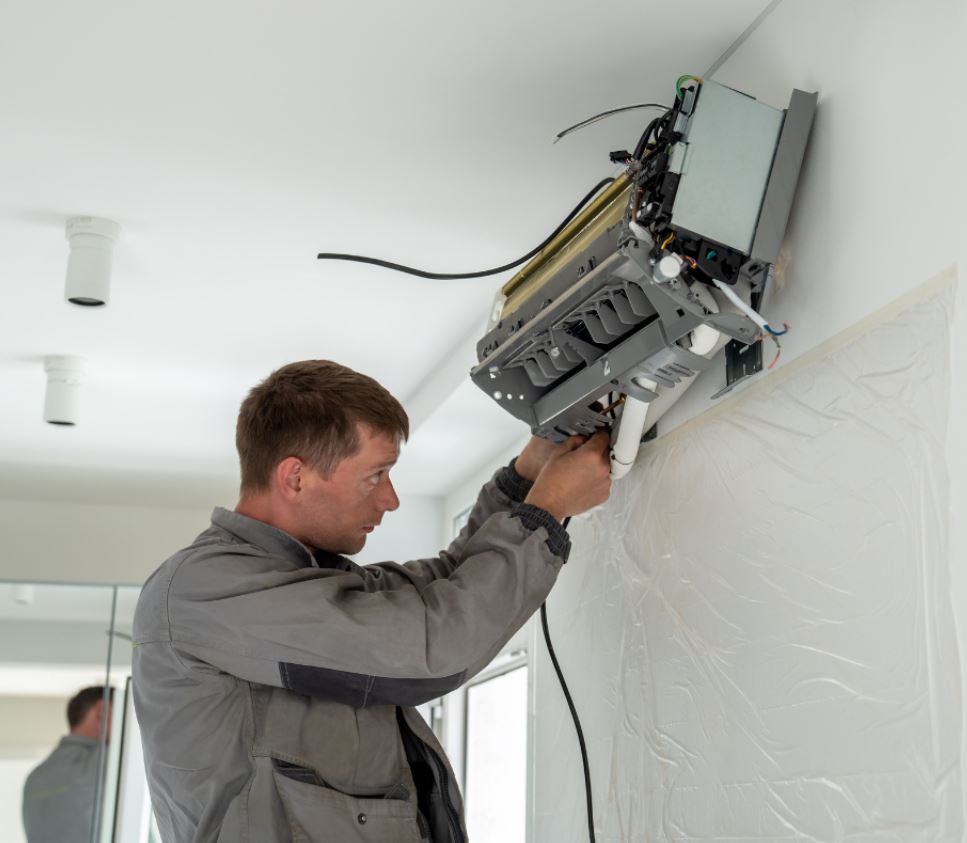How to Find an Air Conditioner Leak

Usually, your local HVAC contractor provides high-quality heating & cooling services, but let’s explore tips and methods to identify issues on your own.
Checking Your Air Conditioner for Leaks
Having a working air conditioning system is essential to keeping your home cool and comfortable during the summer. However, refrigerant leaks can lead to some embarrassing moments.
To help fix the situation, learn about 5 ways to check for refrigerant leaks before you are left without an air conditioner.
1. Dye Detection
A dye test can be an effective way to check for refrigerant leaks in your air conditioning system. The process requires releasing a fluorescent dye into your HVAC system. Then, allow it to circulate through the system. The dye will leak out of any leaks in the system.
Now, scan your HVAC system with a detector lamp to locate the locations of the dye leaks. The entire process only takes a few minutes. However, you will need to invest in specialized equipment.
2. Electronic Detection
Electronic detection is another way to detect leaks in your air conditioner. The method is simple and allows you to scan refrigeration equipment parts outside the home. When the electronic device detects a leak, an automatic alarm is triggered.
The only downside to using an electronic device is that leaks can only be detected in places where the device comes into contact with refrigerant components. These electronic devices can also be a bit overpriced and may require some training to use correctly.
3. Nitrogen Detection
Among the methods for checking for leaks, nitrogen detection is quite popular among professionals and homeowners. The cost of this method may be higher than other methods, but the results are much more reliable.
The first step in detecting a leak using this method is to remove any remaining freon from the system. After that, nitrogen must be pumped into the air conditioning unit.
If there are leaks in the system, you will hear sounds at the leak locations. Another way to determine the location of the leak is to monitor the pressure changes on the gauges. If you see a significant change in pressure in any component of the air conditioner, you will know that a leak is present.
4. Detecting Soap Bubbles
One of the best ways to check for a refrigerant leak without calling in a professional is to perform a soap bubble test. This test is easy to do yourself. Simply mix warm water with a little soap and stir the mixture for a few minutes.
After mixing the solution, run it through your air conditioner’s refrigerant system. If any of the components are leaking, air bubbles will come out of that area. Make sure that the bubble mixture does not contain any harsh ingredients to avoid damaging the refrigerant system.
5. Detecting Oil
In some cases, when your air conditioner is leaking refrigerant, it will also release oil. Oil is thick and dark in color, making it easy to detect. Oil also has a strong odor that can be easily smelled from long distances.
If you suspect a leak, start inspecting the air conditioner parts with your hands. However, make sure you wear gloves to avoid getting your hands dirty or getting cut or nicked by a sharp object. As you move around the air conditioner checking for refrigerant leaks, continue to inspect your gloves for any signs of oil leaks. If a lot of oil is leaking from any component, there is a good chance there is a leak that needs to be repaired. You can also use a light-colored cloth if you do not have gloves when inspecting the air conditioning system.
Most homes and businesses use ducts to move air in their HVAC systems. A well-working HVAC system has several important functions. The heat pump works properly, air flows cleanly, and dampers control how much air goes to each vent. Delivering the right air to different rooms is vital so that one room isn’t too hot while another is too cold.
Adjusting the HVAC system for proper airflow is called balancing the system. In this article, we’ll explain why balancing an HVAC system is important, what causes systems to become unbalanced, and what the balancing process involves.







